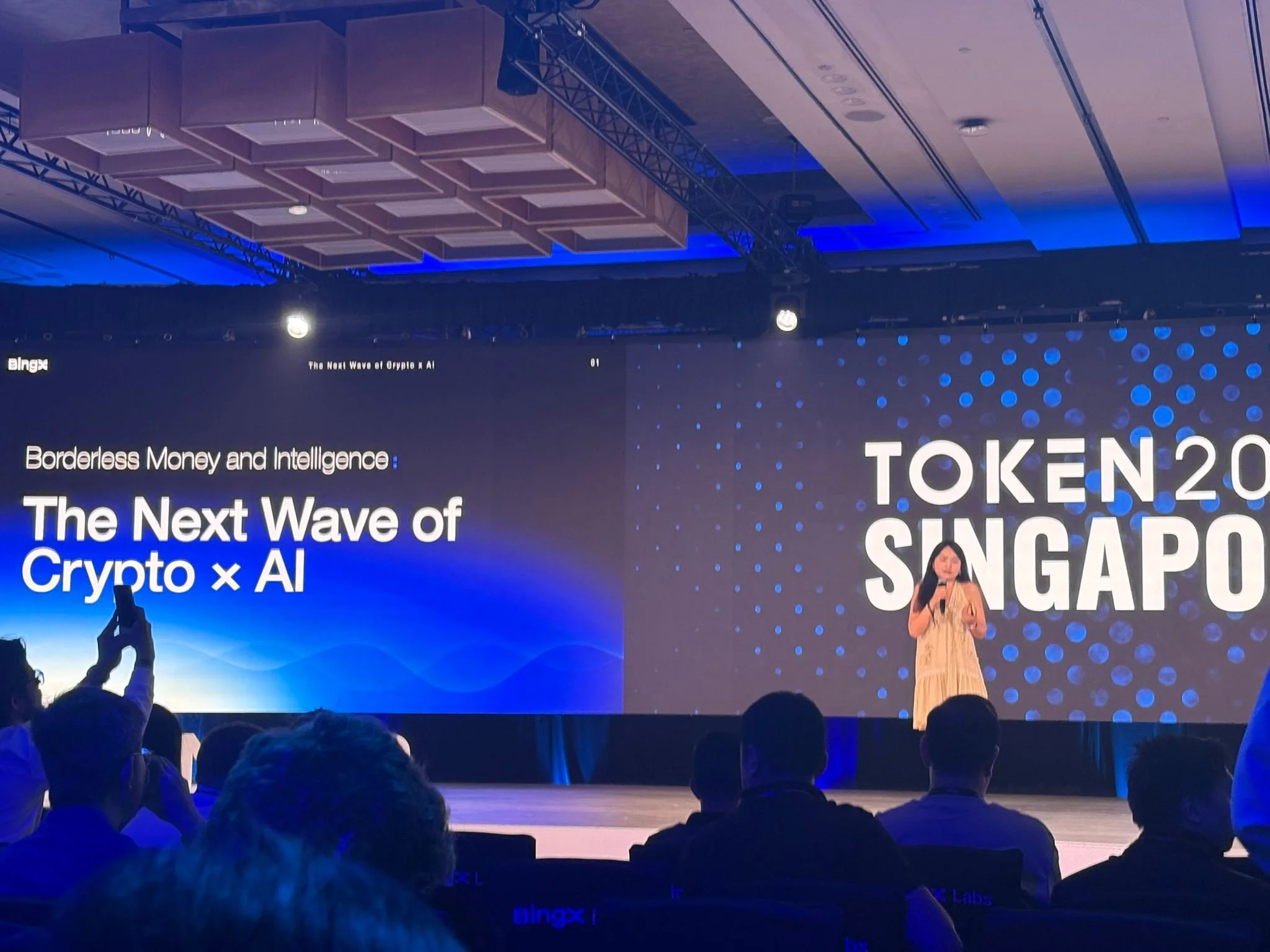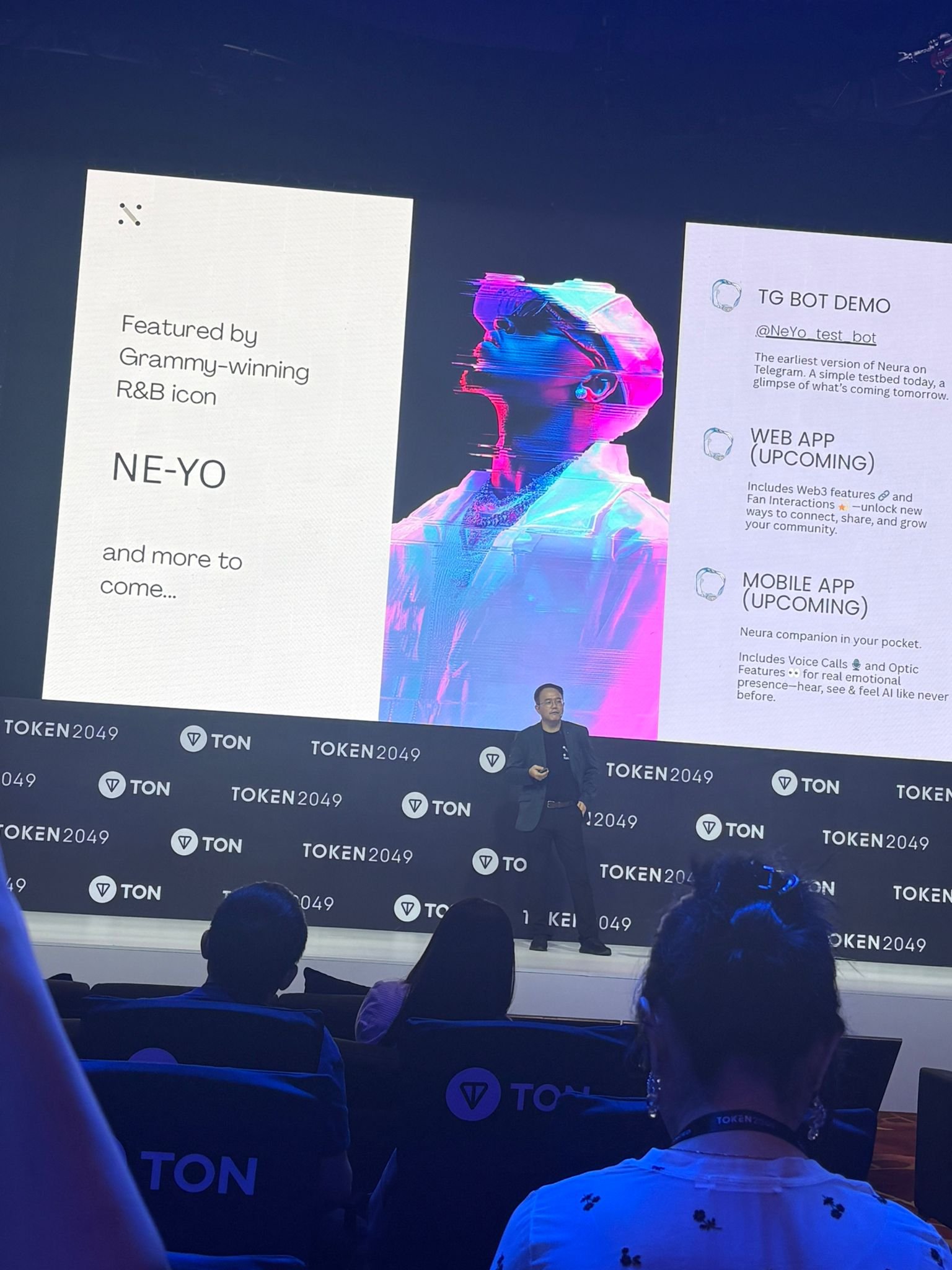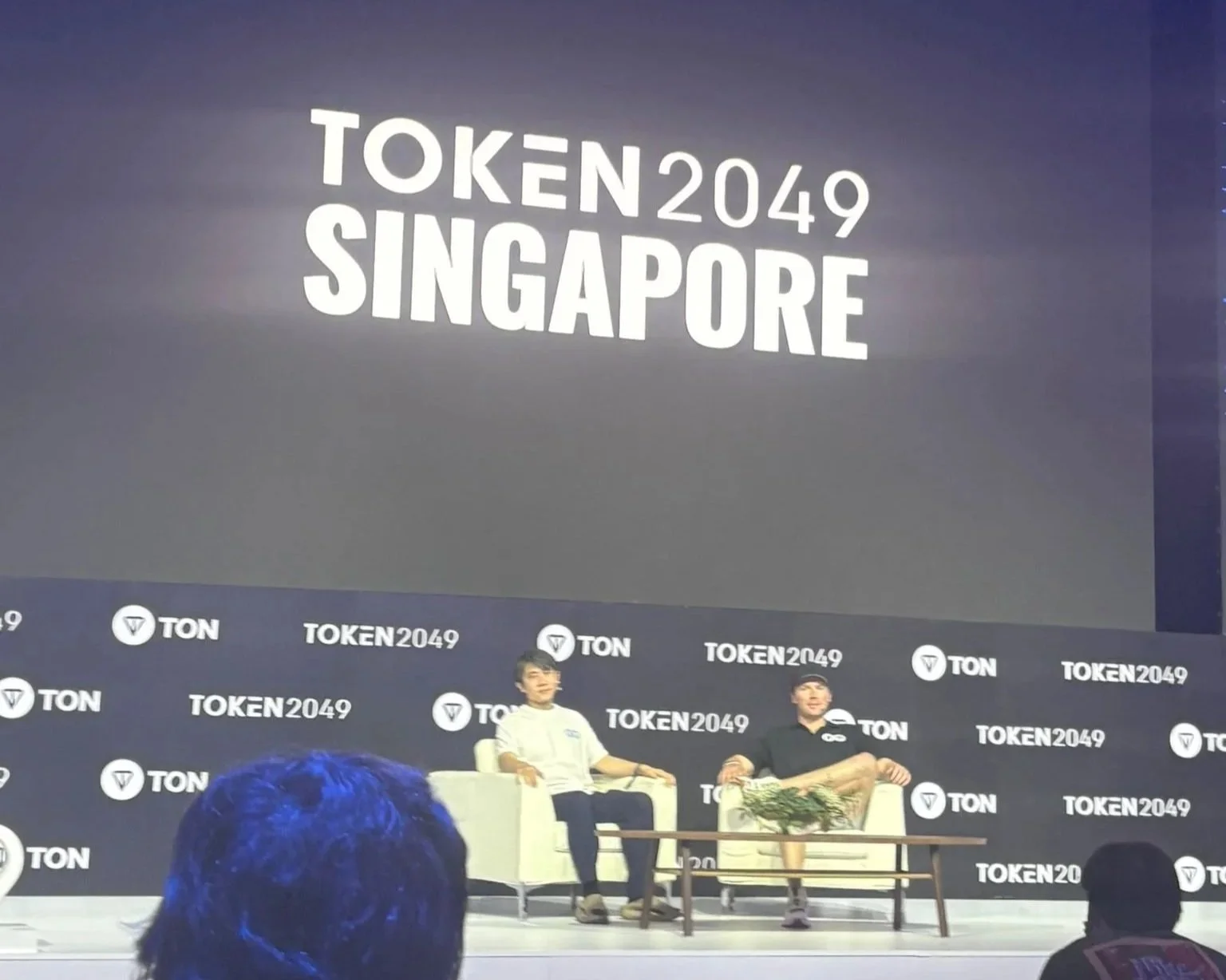Day Two Highlights at TOKEN2049
The second day of TOKEN2049 reinforced why the event stands as the premier platform for exploring the future of Web3. Across numerous keynotes and panels, a powerful theme emerged: the convergence of AI and blockchain.
Discussions around DePIN were the most tangible expression of this union. From restoring trust and privacy, to decentralising intelligence, to reshaping infrastructure markets, speakers painted a cohesive picture of how these two technologies are driving the next frontier of innovation.
→ Curious about what went down on day one? Our Day One Highlights at TOKEN2049 blog lives here.
Charles Hoskinson: Restoring Trust with Midnight
Charles Hoskinson, Co-Founder of Input Output and Cardano, opened with a keynote that underscored blockchain’s role in rebuilding global trust. Introducing Midnight, he described it not simply as another layer 2 network but as a paradigm shift – a universal proof layer designed to merge privacy and public accountability. With Midnight, users can prove the authenticity of information, add privacy to multiple blockchains, and regain ownership of their identity and data.
He argued that outdated systems such as AML and KYC could be modernised through blockchain-based proofs. This would enable compliance that’s both global and 24/7. Hoskinson also stressed that the blockchain ecosystem must beyond the tired narratives such as “Ethereum vs. Solana” - especially now that corporations and governments are embracing Web3.
““I’ve been around for every generation of crypto. Midnight is the next and final generation. It’s the adult generation.””
Midnight, he said, represents the next generation of blockchain, bridging the legacy systems with a new era of transparency and user control.
Borderless Money and Intelligence: Vivien Lin on AI x Crypto
Building on the trust theme, Vivien Lin, Chief Product Officer of BingX carried the day’s AI thread forward in her keynote on Borderless Money and Intelligence. She highlighted decentralisation as a redistribution of trust and stressed that data is now the defining moat. With compute and models becoming commoditised, she argued, whoever organises and enriches blockchain data will hold the advantage.
Lin announced BingX AI Master, the world’s first AI-driven crypto strategist launching this September to democratise quantitative trading strategies. She also shared her vision of an AI-powered exchange that adapts to users – rather than the other way around – through personalised workflows and data governance. For Lin, AI and blockchain together redefine transparency, accessibility, and user empowerment in finance.
Kevin Pang: The Next Phase – Emotion AI
Shifting gears, Kevin Pang, Head of Business Development at Neura, explored the future of Emotion AI. He positioned emotional intelligence as the next leap in AI’s evolution. While generative AI has scaled reasoning and efficiency, its blind spots - from sarcasm to cultural nuance - still leave users unconvinced.
Pang introduced Neura’s architecture, which includes longitudinal emotional memory, multimodal fusion, and cultural adaptation layers. He argued that emotional intelligence in AI is not an add-on but a system-level challenge. From therapy and elder care to retail recommendations and immersive gaming, emotionally coherent AI could transform industries — and critically, it will depend on decentralised intelligence rather than static, centralised datasets.
OG Labs: AI Without Limits
A panel hosted by OG Labs explored how blockchain and AI can solve each other’s challenges.
Ming Wu, Co-Founder and CTO, pointed out that AI’s centralisation and opacity could be countered by blockchain’s transparency and verifiability. Conversely, AI could simplify blockchain’s complexity for end-users, easing adoption.
Jake Salerno, Head of Business Development, highlighted OG Labs’ decentralised compute solutions, dubbed Cloud3, which rival traditional cloud providers while offering more democratic control. Together, the panellists argued that AI and blockchain will scale more effectively when combined, creating an open and verifiable intelligence layer.
DePIN: From Hype to Trillion-Dollar Potential
Perhaps the most vivid example of AI and blockchain convergence came during the panel on DePIN, where Guarav Sharma, CEO of io.net, set the tone by stressing that the trillion-dollar opportunity depends not on decentralisation for its own sake, but on building networks that are cheaper, faster, and easier to scale.
He likened the challenge to energy’s shift from centralised grids to distributed systems, warning that only DePIN projects with strong business models will survive.
Greg Osuri, CEO of Akash Network, followed by outlining the technical challenges of decentralising AI training, which requires homogenous GPUs and highly reliable nodes. While he acknowledged that the energy demands are immense, he maintained that AI training will inevitably become decentralised. Tokens, he said, are valuable in bootstrapping networks like Akash, but long-term success must be built on fundamentals
Frank Mong, CEO of Helium, highlighted user incentives. Helium scaled to a million-node network by focusing on fast, accessible data. With telecom representing a multi-trillion-dollar industry, even modest adoption of decentralised networks could unlock immense value.
Mike Horton, CEO of GEODNET, showed how DePIN models can generate rapid demand once infrastructure and incentives align. By abstracting multiple DePIN projects, GEODNET has shown that tokenisation, combined with a sound business model, can quickly scale decentralised infrastructure. Horton concluded that physical AI can only become truly democratic – and a billion-dollar market – through decentralisation.
Convergence and Momentum
Day two of TOKEN2049 revealed a striking throughline: AI and blockchain are no longer parallel technologies but converging forces. From Hoskinson’s call to restore trust with Midnight, to Vivien Lin’s AI-driven trading innovations, to Neura’s emotionally intelligent AI, the narrative consistently returned to blockchain as the enabler of transparency, scale, and fairness in AI.
DePIN crystallised this theme, showing how decentralised infrastructure can underpin the next trillion-dollar markets. The message was clear: the future isn’t AI or blockchain - it’s AI on blockchain. And TOKEN2049 is where that future is being written.




